Decorating the kitchen with patchwork tiles
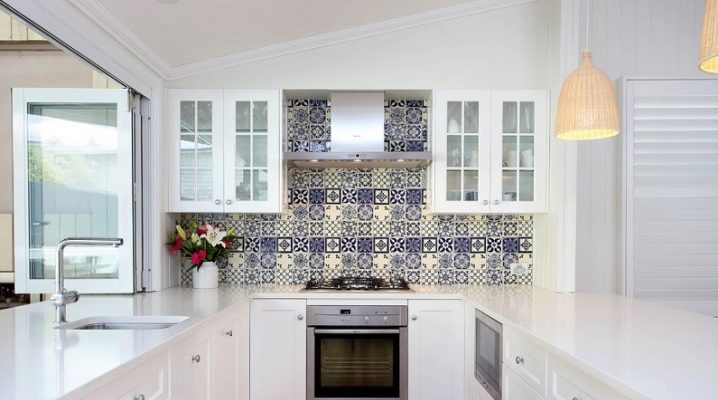
Patchwork literally translated from English means "patchwork". The creation of patterns from various colors and textures is also used to create kitchen aprons. Such a design is able to dilute the monotonous shades of kitchen sets, bringing coziness and conciseness to the room.
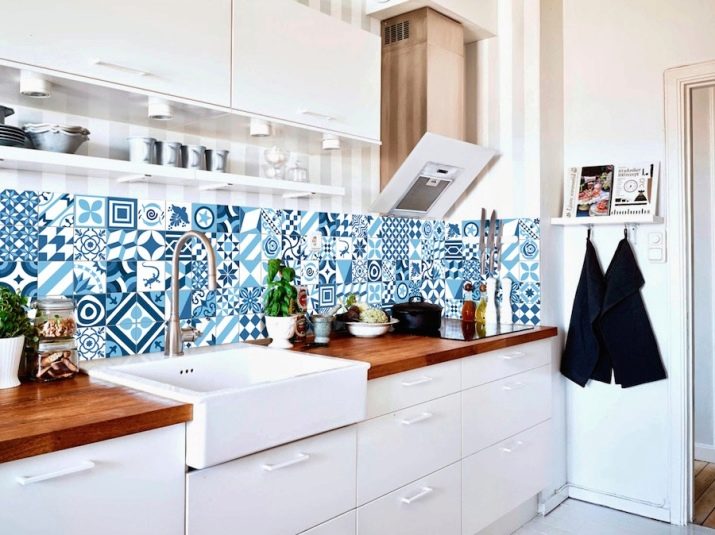
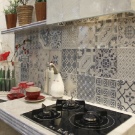

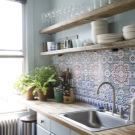

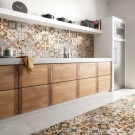
Features of use
Tiles in the style in question can be purchased as a ready-made kit and laid according to the scheme, or you can place separately purchased elements according to your own idea. Such a design is not used in a disorganized space due to the chaotic pattern, which can further create a feeling of chaos and untidiness. Retro and ethnic combinations used in patchwork style tune the atmosphere and dynamics of the kitchen scheme for a rustic feel.
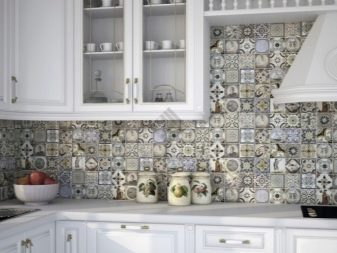
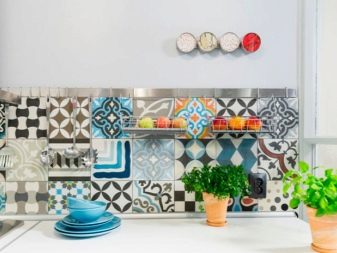
Patchwork is preferably used in monotonous interiors, diluting the monotony of the main shade with color: white, gray, beige, green. The combination of bright patterns with pastel and muted palette looks the most harmonious. Textured ceramics with a single color background, but different patterns and shapes are suitable for kitchens with bright facades.
Patchwork tiles are recommended to be combined with neutral tile colors to dilute the active pattern, focusing on a specific area.
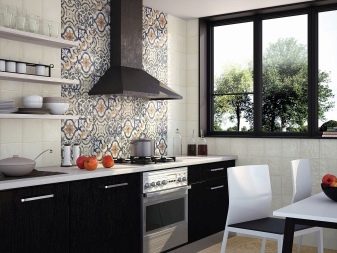
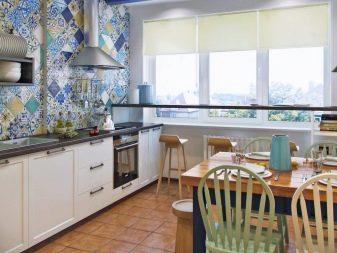
Types of materials
- Quartz. Quartz tiles have a special shine. Suitable for cladding all surfaces. Available in a wide range of colors: pastel, black, all blue.
- Porcelain stoneware. Matte sheen tiles are designed to create calm and natural apron patterns. It is possible to imitate the texture of stone, marble, travertine.
- Cement. Does not require firing, unlike tiles made of clay or ceramics. Elements can be created independently using molds. Suitable for the design of non-standard kitchen aprons.

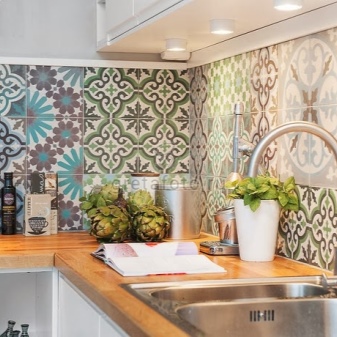
- Ceramic. The traditional material for the manufacture of patchwork tiles. It has a bright gloss and a wide color palette, a wide range of patterns and schemes. Used to create Moroccan and Mediterranean apron designs. Suitable for use as a floor covering.
- Non-slip coating. It is mainly used as a floor covering, but also suitable for creating an apron. Non-slip tiles are easy to clean and have increased wear resistance. These factors are especially important when cleaning the kitchen space every day.
The tiles are made in a different color palette, decorated with different patterns, and have all kinds of sizes. Materials - ceramics, porcelain stoneware. The outer surface is matte.
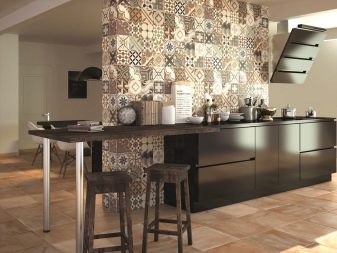
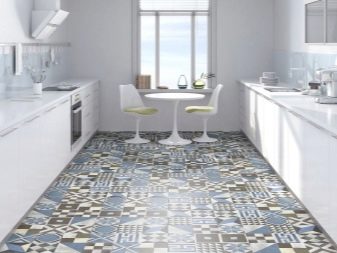
- Plastic. Tiles made of plastic are cheaper than ceramic or porcelain stoneware tiles. Very cheap products may not meet the safety requirements for the use of combustible materials. It is not recommended to lay a plastic tile backsplash in the area of the stove and other areas where high temperatures are exposed.
- Mosaic. The tile is made of glass, ceramic, metal colored elements of various sizes. An apron made of smalt looks original.
Before buying mosaic compositions, it is worth examining the resistance of the material to changes in temperature, humidity, and the durability of the tiles.
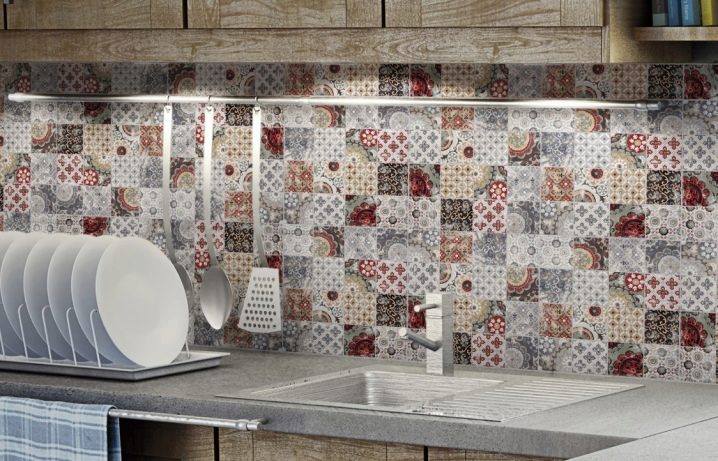
Advantages and disadvantages
The benefits include:
- the ability to independently create a composition: the apron is made up of various colored and textured modules, various collections and styles are used;
- availability of ready-made kits;
- creation of original decor.
Of the shortcomings, it is worth highlighting only the ability of patchwork tiles to wreak havoc in an unorganized room.
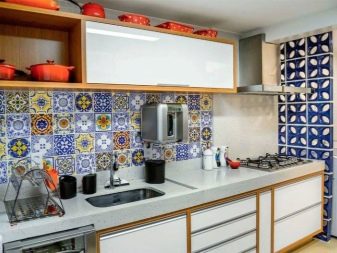
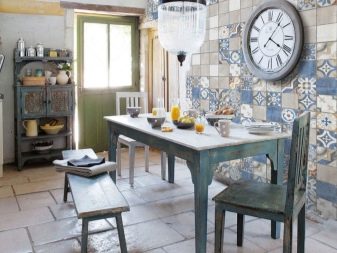
Types of design
Before creating an apron, it is advisable to outline its borders. The contours of the tiles should be in line with or outside the kitchen units. Before starting to lay the patterns, it is necessary to take measurements and outline the location of the future pattern. The edges of the apron should go behind the top and bottom drawers.
Patchwork tiles for the kitchen are presented in a wide price segment and size range. Approximate designs of aprons are represented by tiles measuring 20x20 cm. When creating compositions, one-color tiles are used to dilute color combinations.


- The classic version. It involves the decoration of the entire space with tiles.
- Chess style. Suitable for tiles of different geometric shapes but the same size. It is advisable to give preference to square models.

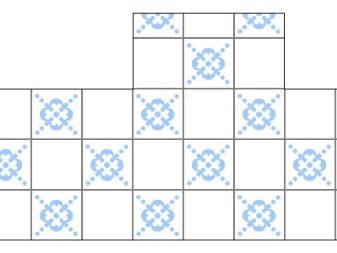
- Zoning. The method involves the allocation of one main zone on the apron: stove, hood.
- Mixed style. Creation of an arbitrary drawing. Tiles of different shapes are used. When working, it is worth choosing one direction - working with color or texture. The combination of all types of tiles will lead to dissonance in the picture.
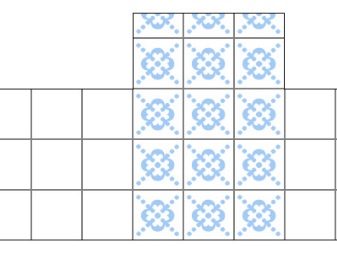
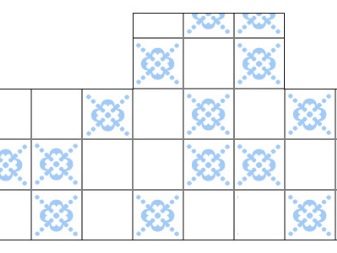
- Selection of a row. A simple outline of a popular pattern in the form of one or more lines. The row can be horizontal or vertical, waveform or diagonal directions.
- Zoning and selection of a row. Combining two techniques. Most of the decor is placed on the selected area: stove, hood. The height and width of the drawing of the decorated area can be selected arbitrarily.
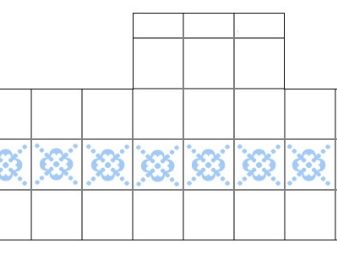
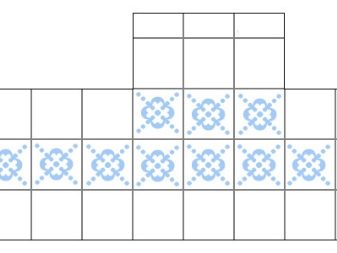
- Zoning and Chess Style. A combination of techniques to highlight a specific area on the apron.
- Decor inserts. A simple way to create an original apron with a small amount of patchwork tiles. The patterns are located in a broken horizontal line or in any other direction. The number of drawings standing with each other alternates.
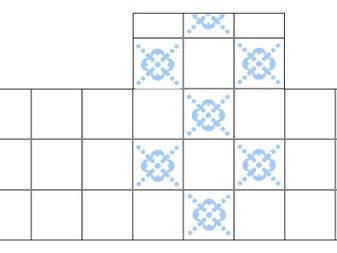
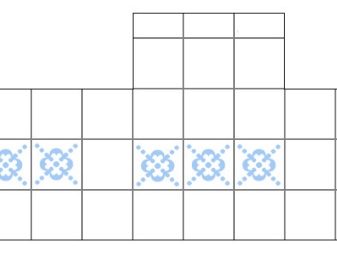
For an overview of a patchwork tile apron, see the next video.













The comment was sent successfully.